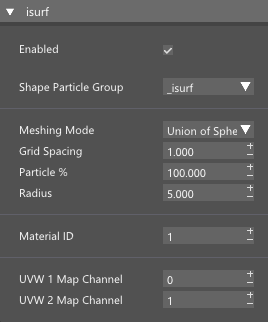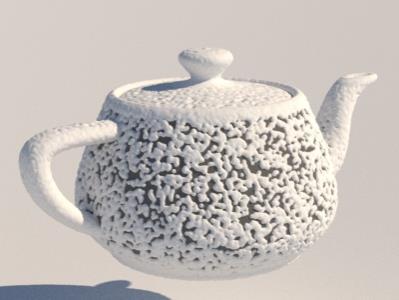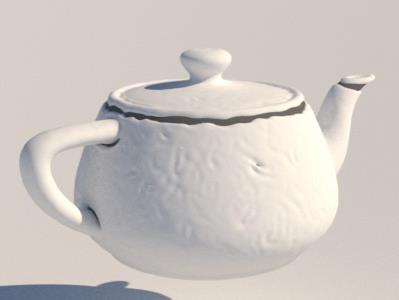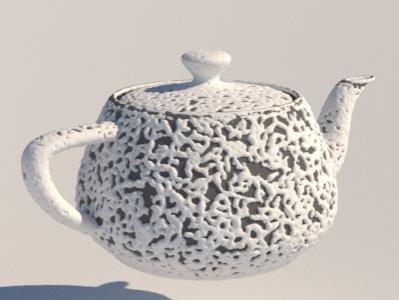isurf

This node creates iso surface from input particles and supports four most popular particle meshing methods. ISurf can also transfer uvw data or color from particle onto the output mesh.
[Inputs]
#Particle Stream - This pin requires a particle stream to be connected. Connection is usually not required if any of the attributes is connected.
#Input (Grid) – Connect voxel grid to generate mesh based on smoke, fire or temperature.
Enabled - Enable or disable node evaluation.
Shape Particle Group - ISurf node outputs a particle that will belong to this group. Particle will not be visible in the viewport and it will not affect the position of the shape.
Grid Spacing - Iso surface meshing is done on a regular grid where each grid cell calculates contribution for each particle. Smaller spacing will result in more detailed mesh but it`ll take considerable more memory and time to compute.
Particle % - Percentage of particles that you want to use.
Radius - Particle influence radius. This parameter is unique for all particles. You should take care that radius value is bigger than Grid Spacing.
Particle % - Percentage of particles that you want to use.
Radius - Particle influence radius. This parameter is unique for all particles. You should take care that radius value is bigger than Grid Spacing.
Grid Spacing Scale – Available when Grid pin is connected. Use this option to set ISurf meshing grid spacing relative to the voxel grid spacing. Value of 1.0 mean that the mesh spacing will be equal to the voxel grid spacing.
Grid Channel – Available when Grid pin is connected. Select which channel you want to use to generate mesh.
Channel Threshold – Available when Grid pin is connected. Channel values that are lower than threshold will be skipped and not used to create mesh.
Material ID - Particle shape material id.
UVW 1 Map Channel - ISurf can write up to two UV channels to mesh on per-particle basis. Values present on UVW 1 pin will be written to this channel.
UVW 1 Map Channel - Values present on UVW 2 pin will be written to this channel.
Meshing Mode - There are several methods to create iso surface and each method will be covered below. Zhu-Bridson will generate the smoothest surface, while Anisotropic is the best for meshing water particles.
|
|
|
|
|
|
Union of Spheres |
Metaballs |
Zhu-Bridson |
Anisotropic |
Union of Spheres
Treats each particle as perfect sphere. Resulting mesh won`t be thin and smooth as other modes.
Metaballs
This is a standard iso surface generation method.
Threshold - Iso surface threshold. Smaller threshold will produce more relaxed surface.
Zhu-Bridson
More advanced method than metaballs that tends to create a smoother surface.
Threshold - Iso surface threshold. Smaller threshold will produce more relaxed surface.
Anisotropic

The most advanced and the slowest method that allows particles to be stretched to create the smoothest surface of all available methods. This meshing mode is perfect for smooth liquids surface.
Threshold - Iso surface threshold. Smaller threshold will produce more relaxed surface.
Min. Neighbours - Particle will be stretched only if it has at least this many neighbours.
Lambda - Smaller value will result in surface with more disconnected areas.
Max Stretch - Maximum particle stretch amount.
Material ID

Material ID - Iso surface material ID.



